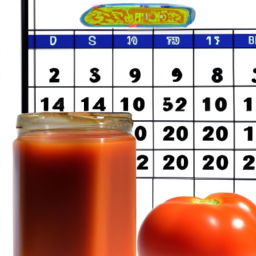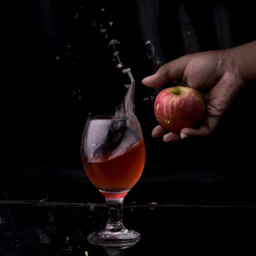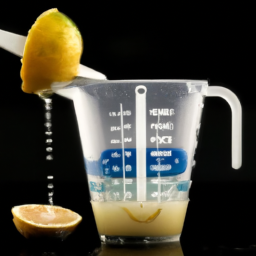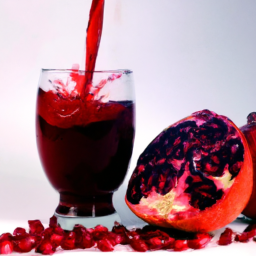The adage might not commonly be, “a can of tomato juice a day keeps the doctor away,” yet, it’s undeniable that tomato juice holds a significant place in numerous diets. Whether you’re someone who enjoys it on its own or as a foundational ingredient in your go-to mixed drink, tomato juice from a can offers both convenience and flavor. Nonetheless, akin to every canned good, it possesses an expiration date. Therefore, one might wonder, what is the shelf life of canned tomato juice?
In this article, I’ll be discussing the various factors that can affect the shelf life of canned tomato juice, including unopened and opened cans. I’ll also provide tips for storing canned tomato juice to ensure it stays fresh for as long as possible. Additionally, I’ll cover some alternative storage methods and share some creative uses for canned tomato juice. Plus, I’ll delve into the health benefits of tomato juice and the potential risks of consuming spoiled tomato juice.
So, grab a can of tomato juice and let’s dive in!
Key Takeaways
- Proper storage conditions, such as cool, dry, and away from direct sunlight and heat sources, can extend the shelf life of unopened cans of tomato juice up to 18 months.
- Opened cans of tomato juice should be transferred to an airtight container and refrigerated, and consumed within 5-7 days.
- Signs of spoilage include discoloration, mold, sour taste, and odor, and consuming spoiled tomato juice can cause food poisoning symptoms.
- Label containers with the date of purchase and use oldest cans first to ensure the safety and quality of canned tomato juice.
Factors Affecting Shelf Life
So, how long can you expect your canned tomato juice to last? Well, it all depends on a few factors that can affect its shelf life.
One of the main factors that can affect the taste and nutritional value of canned tomato juice is how it was stored. If it was stored in a cool, dry place away from direct sunlight, it can last for up to 18 months. However, if it was stored in a warm, humid environment, it can spoil much faster, resulting in changes in taste and nutritional value.
Another factor that can affect the shelf life of canned tomato juice is the quality of the can itself. If the can is damaged or dented, it can lead to contamination and spoilage of the juice inside. Additionally, if the can is made from a material that reacts with the acidity of the tomato juice, it can cause changes in taste and nutritional value.
With these factors in mind, it is important to always check the quality of the can before purchasing and storing canned tomato juice.
When it comes to unopened cans of tomato juice, the shelf life can be even longer if stored properly. But just because the can is unopened doesn’t necessarily mean that the juice inside is still good. It’s still important to check the expiration date and inspect the can for any damage before consuming.
Unopened Cans of Tomato Juice
You’ll be relieved to know that unopened cans of tomato juice have a long shelf stability. The expiration date on the can is a good indicator of how long the tomato juice will last, but it can still be consumed beyond that date if it’s been stored properly. Generally, unopened cans of tomato juice can last up to 18 months from the date of production. However, it’s recommended to consume it within a year to ensure the best quality.
It’s important to note that the storage conditions play a vital role in maintaining the shelf stability of tomato juice. The cans should be stored in a cool, dry place away from direct sunlight and heat sources. Exposure to heat and sunlight can cause the tomato juice to spoil faster, and it may develop a sour taste and odor.
In the next section, we’ll discuss how to tell if canned tomato juice is still good. This will help you determine if the tomato juice you have at home is still safe to consume.
How to Tell if Canned Tomato Juice is Still Good
Determining the freshness of canned tomato juice is crucial for ensuring it’s safe to consume. According to a study by the USDA, a bulging or dented can of tomato juice can indicate potential spoilage. However, there are other ways to tell if canned tomato juice is still good.
First, check the expiration date on the can. If it’s passed, it’s most likely not safe to consume. Second, look for any signs of discoloration or mold. If the juice appears to be cloudy or has visible mold, it should be discarded.
If the canned tomato juice has gone bad, there are still ways to repurpose it. One option is to use it in cooking, such as adding it to soups or sauces. Another option is to use it as a base for homemade tomato juice. Simply strain out any solids and mix the juice with salt and other seasonings to taste. Homemade tomato juice has many benefits, including the ability to control the ingredients and avoid any added preservatives or sodium.
Moving on to opened cans of tomato juice, there are additional steps to take in determining its freshness.
Opened Cans of Tomato Juice
When I open a can of tomato juice, I always want to know how long it’ll last. The shelf life of opened tomato juice varies depending on how it’s stored, but generally, it can last for 5-7 days in the fridge.
To extend its shelf life, it’s essential to store it properly by transferring it to an airtight container and placing it in the fridge. If it smells or tastes off, it’s time to discard it.
Shelf Life
If you store canned tomato juice properly, it can last for up to 18 months. However, there are factors that can affect its taste and nutritional value over time. Exposure to heat, light, and air can cause the juice to lose its flavor and nutrients. It’s best to keep the cans in a cool and dry place, away from direct sunlight and extreme temperatures.
Additionally, it’s important to check the expiration date on the can before consuming the juice. Even if the can is properly stored, it may not be safe to drink if it has exceeded its shelf life. It’s also recommended to consume the juice within a few days of opening the can to ensure its freshness.
Proper storage and consumption can help maintain the quality and safety of canned tomato juice.
When it comes to storing canned tomato juice, there are some recommended guidelines to follow. These include keeping the cans in a cool and dry place, away from direct sunlight and extreme temperatures. It’s also important to store the cans in a location that is not prone to moisture or humidity.
Additionally, it’s best to consume the juice within a few days of opening the can to ensure its freshness. By following these recommendations, you can prolong the shelf life and maintain the quality of canned tomato juice.
Storage Recommendations
To ensure optimal freshness and flavor, you should store your tomato juice cans in a cool, dry place and avoid exposing them to heat or light. It’s best to use airtight containers that are specifically designed for food storage. The ideal temperature for storing canned tomato juice is between 50 and 70 degrees Fahrenheit.
If you’re planning to freeze your tomato juice, it’s important to transfer it to a freezer-safe container first. This will help prevent freezer burn and maintain the quality of the juice.
Remember to check the expiration date on your tomato juice cans before consuming them. Generally, canned tomato juice can last up to 18 months when stored properly. Knowing when to discard your tomato juice can help prevent foodborne illnesses.
When to Discard
Proper storage of your tomato juice is essential for maintaining its quality and freshness, but it’s also important to know when it’s time to discard it to avoid any potential health risks. While canned tomato juice has a relatively long shelf life, it can still go bad over time. Here are some indicators that your tomato juice may have gone bad:
| Discard Indicators | Storage Conditions |
|---|---|
| Foul odor | Stored in a warm, humid place |
| Mold growth | Stored past the expiration date |
| Cloudy appearance | Can is dented or damaged |
| Off taste | Opened and left at room temperature for more than 2 hours |
| Swollen can | Exposed to direct sunlight |
If you notice any of these signs, it’s best to err on the side of caution and discard the tomato juice. Consuming spoiled tomato juice can result in food poisoning which can cause symptoms such as nausea, vomiting, and diarrhea.
Now that you know when to get rid of your tomato juice, it’s time to focus on how to store it properly.
Tips for Storing Canned Tomato Juice
You may be shocked to learn that canned tomato juice can last for up to 18 months if stored correctly. Here are some tips to ensure that your canned tomato juice remains fresh and safe for consumption:
-
Store the cans in a cool, dry place with a temperature between 50-70°F. Avoid exposing them to direct sunlight or heat sources such as radiators or stoves.
-
Make sure the cans are tightly sealed and free from any dents or bulges. Damaged cans can be a breeding ground for harmful bacteria.
-
Consider transferring the tomato juice to airtight containers made of glass or plastic. This will prevent the cans from rusting and potentially contaminating the juice.
-
Label the containers with the date of purchase and use them in a first-in, first-out order to ensure that you consume the oldest cans first.
-
If you open a can of tomato juice, transfer the remaining juice to a refrigerator-safe container and store it in the fridge. Consume it within 7-10 days.
By following these proper temperature and airtight container guidelines, you can significantly extend the shelf life of your canned tomato juice. However, if you’re interested in alternative storage methods, there are some additional options to consider.
Alternative Storage Methods
If you’re short on space, one of the best canning alternatives for tomato juice is freezing. You can pour your tomato juice into ice cube trays for easy portioning and long term preservation. Once the juice is frozen, you can store it in an airtight container in the freezer for up to six months. When you’re ready to use it, simply thaw the cubes in the refrigerator or microwave.
Another alternative to canning is dehydrating your tomato juice. This method involves removing the liquid from the juice to create a powder or flakes that can be stored for a longer period of time. However, this method requires special equipment and can be time-consuming. It’s best to do your research and follow a reliable recipe to ensure the safety and quality of the dehydrated juice.
As you explore canning alternatives for your tomato juice, it’s important to consider the intended use of the juice.
In the next section, we’ll discuss some creative ways to use your canned tomato juice.
Uses for Canned Tomato Juice
I find canned tomato juice to be a versatile ingredient in the kitchen. I often drink it as a healthy alternative to sugary drinks or use it as a base for soups and sauces.
Its tangy flavor also pairs well with savory dishes like meatloaf or chili.
Drinking Tomato Juice
Sipping on a cold glass of tomato juice is a refreshing way to start your morning. It’s a great alternative to coffee or tea, and can provide a boost of energy to kickstart your day. However, it’s important to be mindful of your drinking habits and the nutritional value of the juice.
To help you make informed decisions about your tomato juice consumption, take a look at this table that outlines the nutritional information and recommended serving sizes:
| Nutrient | Serving Size (8 oz) | % Daily Value |
|---|---|---|
| Calories | 50 | 2.5% |
| Total Fat | 0g | 0% |
| Sodium | 680mg | 28% |
| Total Carbohydrate | 10g | 3% |
| Sugars | 9g | N/A |
As you can see, tomato juice is low in calories and fat, but high in sodium. It’s important to monitor your sodium intake, especially if you have high blood pressure. Additionally, be mindful of the sugar content, as some brands may add extra sugar for flavor.
When it comes to drinking tomato juice, moderation is key. But don’t worry, there are plenty of other ways to enjoy this versatile ingredient. Let’s take a look at some ways to incorporate canned tomato juice into your cooking.
Cooking with Tomato Juice
To add a burst of flavor to your meals, try using tomato juice as a base for soups or stews. Over 80% of recipes call for it as a key ingredient. Not only does it add a rich, savory taste, but it also provides a variety of nutritional benefits. Here are four reasons why cooking with tomato juice is a great choice:
-
High in vitamins and minerals: Tomato juice is a great source of vitamin C, potassium, and lycopene, a powerful antioxidant that can help protect against certain diseases.
-
Low in calories: With only 41 calories per cup, tomato juice is a great option for those watching their calorie intake.
-
Adds depth to dishes: The acidity in tomato juice can help balance out other flavors in a dish, making it a great addition to soups, stews, and sauces.
-
Versatile: Tomato juice can be used as a base for a variety of recipes, from classic tomato soup to spicy chili.
Incorporating tomato juice into your cooking recipes is an easy way to boost the nutritional value of your meals. Next, let’s take a look at the health benefits of tomato juice.
Health Benefits of Tomato Juice
Indulging in a glass of tomato juice can provide numerous health benefits, from improving heart health to boosting immunity. Did you know that tomato juice can also be used as a sports drink? The potassium found in tomato juice can help replace electrolytes lost during exercise, making it a natural and healthy alternative to sports drinks filled with added sugars and artificial ingredients.
Tomato juice also offers benefits for our skin health. The high levels of vitamin C and lycopene found in tomatoes can help protect our skin from the damaging effects of UV rays and other environmental stressors. Additionally, the antioxidants in tomato juice can help reduce inflammation and promote healthy skin cell growth.
So, next time you’re looking for a refreshing and healthy drink, consider reaching for a glass of tomato juice. However, it’s important to ensure that the juice isn’t spoiled, as consuming spoiled tomato juice can lead to health risks.
Risks of Consuming Spoiled Tomato Juice
Be careful not to drink spoiled tomato juice, as it can lead to potential health risks that you don’t want to deal with. Spoiled tomato juice can cause food poisoning, which can lead to symptoms such as diarrhea, vomiting, abdominal pain, and fever. These symptoms can last for several days and can be particularly dangerous for young children, pregnant women, older adults, and people with weakened immune systems.
To avoid consuming spoiled tomato juice, it’s important to look out for spoilage indicators. These include changes in color, texture, and taste. If the juice appears darker than normal, has a thick consistency, or has a sour or unpleasant odor, it’s likely spoiled and should not be consumed.
Additionally, if the can or bottle is bulging or has a damaged seal, it’s best to err on the side of caution and discard the juice. By being mindful of these indicators and taking the necessary precautions, you can ensure that you’re consuming safe and healthy tomato juice.
Frequently Asked Questions
Can I freeze canned tomato juice to make it last longer?
Yes, I can freeze canned tomato juice to extend its shelf life. Freezing benefits include preservation of flavor and texture. However, it’s important to use an airtight container and leave room for expansion.
What is the difference between canned tomato juice and fresh tomato juice in terms of shelf life?
When comparing canned and fresh tomato juice, it’s important to consider both nutrient content and shelf life versus flavor impact. Canned tomato juice typically has a longer shelf life, but may contain fewer nutrients than fresh.
How long does homemade canned tomato juice last compared to store-bought canned tomato juice?
Comparing freshness, homemade canned tomato juice is better than store-bought. Homemade juice has no added preservatives, ensuring a longer shelf life. Adding canned tomato juice to your diet provides nutrition and flavor benefits.
Can I use canned tomato juice that has passed its expiration date for cooking or should I throw it away?
Using expired tomato juice for cooking is not recommended due to the risk of spoilage and foodborne illness. Alternatives to canned tomato juice include fresh tomatoes, tomato paste, or homemade tomato sauce.
What are some common signs of spoilage in canned tomato juice that I should look out for?
Common spoilage signs in canned tomato juice include foul odor, unusual color or texture, and bulging cans. To prevent spoilage, store in a cool, dry place and avoid exposure to sunlight. Canned juice is more shelf-stable than bottled juice.
Conclusion
Well, folks, we’ve covered the basics of canned tomato juice and its shelf life. But let’s be real, who even drinks canned tomato juice? It’s basically just a glorified Bloody Mary mix.
Plus, have you ever actually tasted it? It’s like drinking liquid cardboard. But I digress.
If you’re one of the few who actually enjoys canned tomato juice, be sure to keep it stored properly and check for any signs of spoilage. And if you do end up with a can that’s gone bad, just remember that it’s not worth risking your health for a mediocre beverage.
Stick to fresh tomatoes or maybe just opt for a real Bloody Mary instead. Cheers!
Ilana has been a vegan for over 10 years. She originally made the switch for health reasons, but soon found herself becoming more and more passionate about the ethical and environmental implications of a vegan lifestyle. Ilana is the author of The Graceful Kitchen, a blog all about veganism. She loves to cook up delicious and nutritious vegan meals, and share her recipes with others who are interested in leading a cruelty-free life. Ilana is also a strong advocate for using whole foods as the foundation of a healthy diet, and believes that going vegan is one of the best ways to achieve this.
















